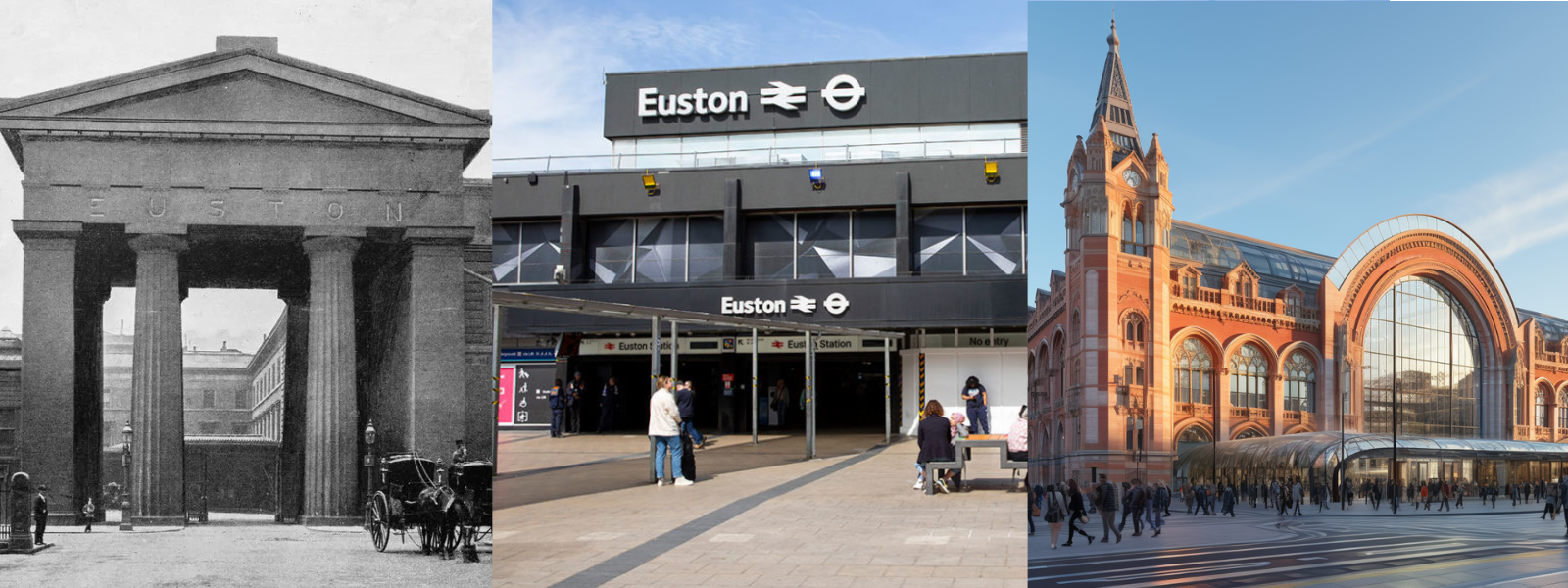Nicholas Boys Smith reflects on the future for Euston Station.
How do we fall back in love with the future? How do we build bridges and stations in years not decades? How can we recreate a culture which says, “crack on “not “stop there”? How do we move forward without squandering precious energy upon buildings that will, shamefully and unsustainably, last only a generation?
We need to create a future which excites and intrigues, which thrills but which also reassures, which by the materials of its construction, the resilience of its design and the humanity of its appeal lasts into the far future.
Not just our new homes but our new places, our new stations should be big and beautiful, in communion with the past certainly but stretching towards the future as well. We should build for 500 years not for 50. And we should do so using the cumulated and organic wisdom of the last 1000 years not just the last 100.
This is a recently completed British train station. It is, not to put too fine a point on it, pathetic. Value engineered to a level of comatose ugliness that dispirits and dulls the mind, dissuading passengers and degrading the trains that run through it. It is not civic or sociable architecture.
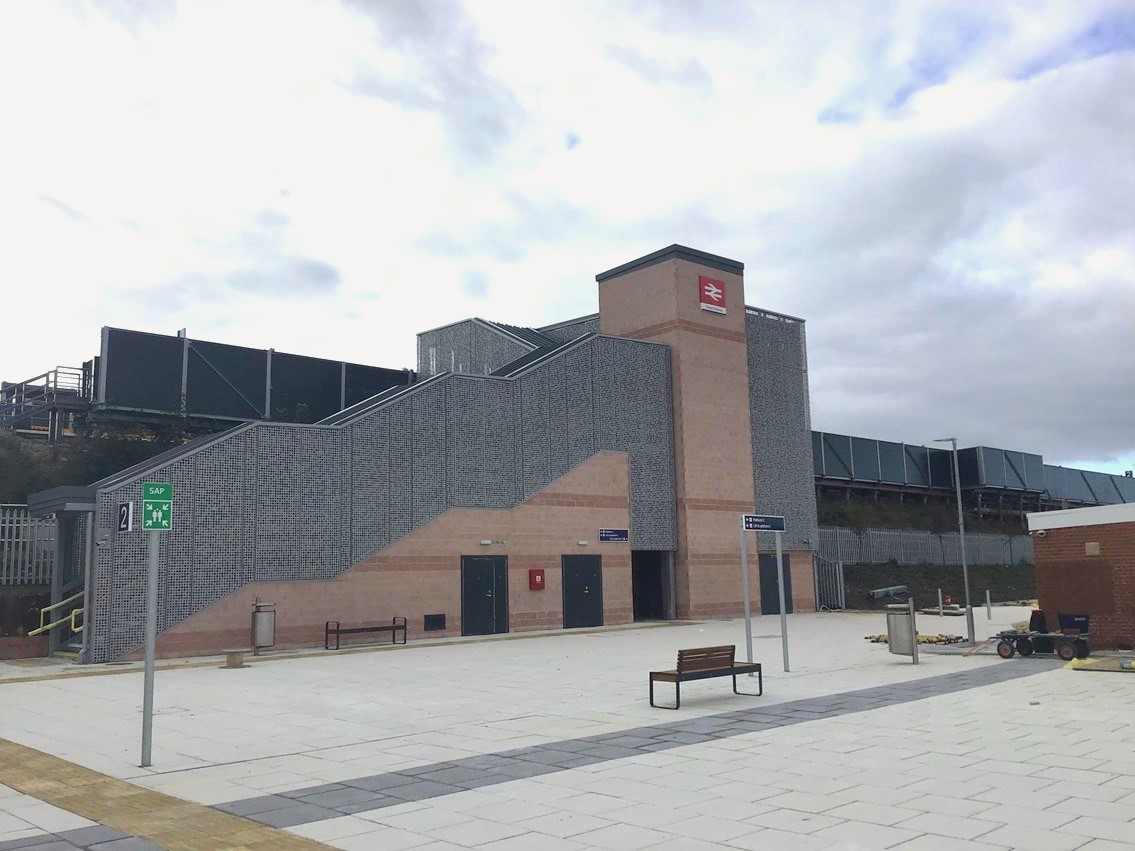
Thanet Train Station: anti-social architecture
This building is antisocial. It says, “don’t come here”, “ don’t use me“, “why don’t you take the car? “ (And, by the way, this is not just my opinion. Or I suspect yours. Don’t fall for the old lie that good design is subjective. It is not. Over the last generation a trickle of evidence has turned into a flood. The types of places in which we like to be and wish to walk, which raise the spirits and warm the heart, which encourage knowing our neighbours and feeling at home in the world, such places are highly predictable. We are humans, influenced by our environment in ways that may not be identical from one to the other but which are highly consistent, rhyming across the planet1)
Euston Station was the oldest of London’s terminal stations facing north. Later described by Sir John Betjeman as ‘one of London’s finest rooms’ it treated all visitors, rich or poor alike, as guests at a luxury hotel. Trains were there not just to transport but to dignify. It was accompanied by the totemic ‘Euston Arch’ (actually a 70ft high Doric Propylaeum) unveiled in May 1838, when the station was less than one year old and before the line to Birmingham was even finished.
Its destruction in the 1960s was a great crime. There was at least some semblance of utilitarian justification for demolishing the station. Longer platforms were necessary and the old station crossed their most obvious path. However, abolishing the austerely beautiful Euston Arch was an unnecessary act of malice. The Earl of Euston and John Betjeman spear-pointed a spirited campaign to save it. The contractor offered to re-site it for a modest cost. However, British Rail was adamant. Euston Arch was the past. The past needed to be swept away. Dodgy reconstruction cost figures (£4.3 million in 2021 money) were chucked about and over the winter of 1961-2 the Arch was demolished. Instead of paying for reconstruction, British Rail paid for most of the stones to be transported to East London where they secretly dumped them in the Prescott Channel, like murders hiding the evidence of their crime.
Although they have had 60 years to accustom themselves, Londoners have not come to love the 1960s replacement Euston station. The semi-subterranean platforms are dark and bare. As Vincent Scully said of the parallel transformation of Penn Station in New York, ‘One entered the city like a god. One scuttles in now like a rat.’ Even a sympathetic writer, the railways historian, Christian Wolmar who once tried to be Labour mayor for London, has conceded that ‘this is still an unlovable terminus with not a single feature of architectural merit.’ Euston Station’s demise, and the pitiable ugliness of its replacement has been an effective recruiting sergeant for heritage preservation ever since. Why support change when it so palpably makes things worse?
But, if announcements this week come to pass, Euston station is to be rebuilt. What should it look like? What should it be? How can we create a station which will dignify the use of the train and which future generations will adore and revere? We need to throw away the entire process we’ve used for designing public buildings over the last century. Very few have touched the public soul. Very few will still be with us in 100 years’ time. Clearly, we should be ambitious, building over tracks and creating a big and beautiful new neighbourhood for London, just as New York did at Grand Central.
Instead of running circular and inward-looking design competitions, judged by designers for designers with the people’s preferences shut out, we need to ask: what do the public love?2 Where do they want to be? What will sing not just of our time but of all time? What is of this place not of any place? What will the public not oppose but clamour for? What will be cherished and preserved in 2500 or 3000 as we cradle and care for Salisbury Cathedral or Westminster Abbey?
Fortunately, the process of discovering what people cherish is much quicker and easier to do now. Online platforms, real-time engagement, generative visual AI all mean that we can play with concepts and gauge public responses with a breadth, ambition and precision that was impossible even a few short years ago. So, what should the new Euston station look like? I don’t know but here are some big and playful ideas to get you thinking, caring and daring to hope. They are AI-generated so some of the details (those tram lines and where some trees start and stop) can be a little physics-defying. Focus instead on the place being imagined and what it would do for London and for Londoners.
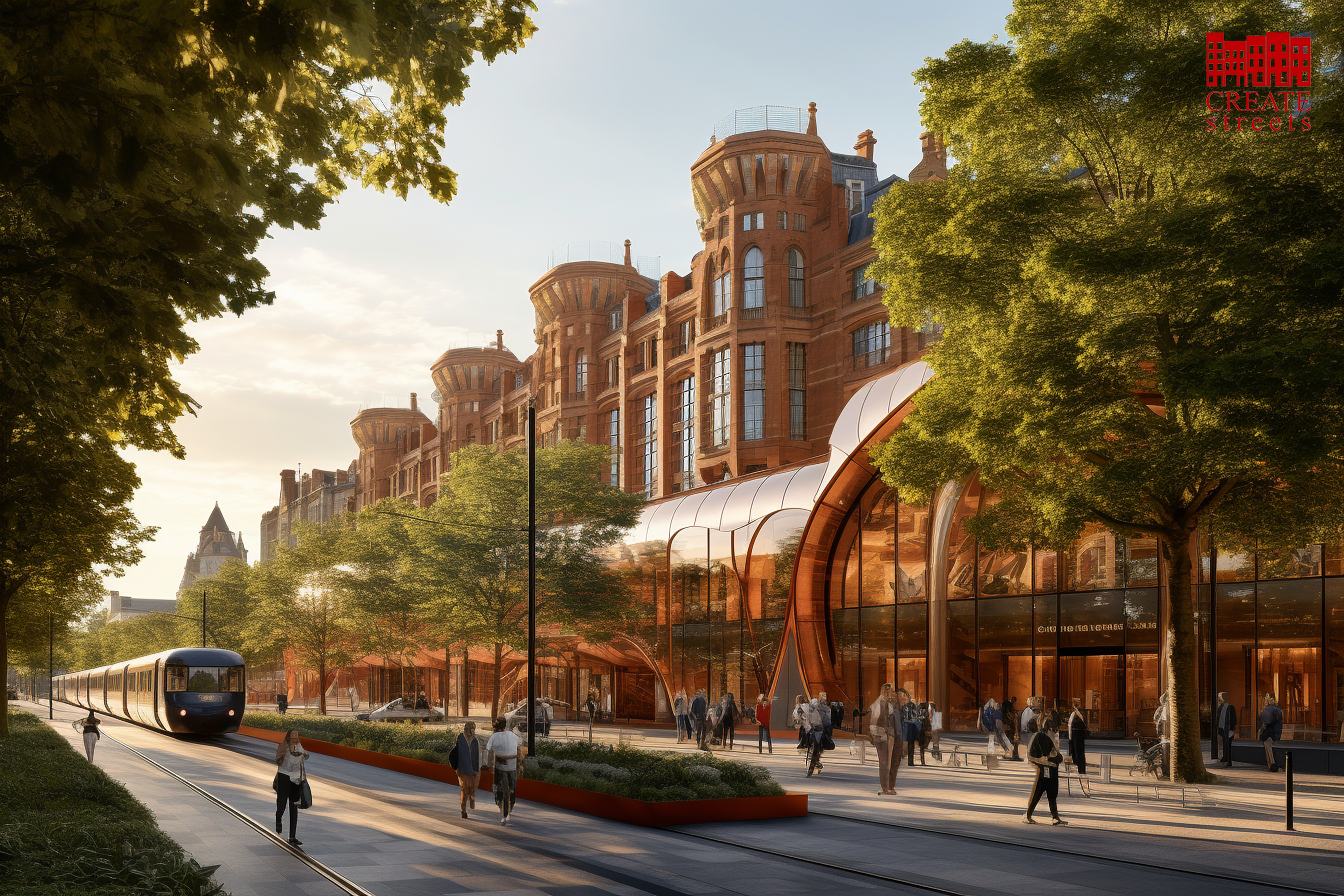
Trees, trams and towers with rooftop terraces instead of turrets or cupolas. Here Euston Station is less of an individual building and more a glorious and new part of the city. Storeys of offices and homes are layered above the extravagantly glazed shops leading to the station.
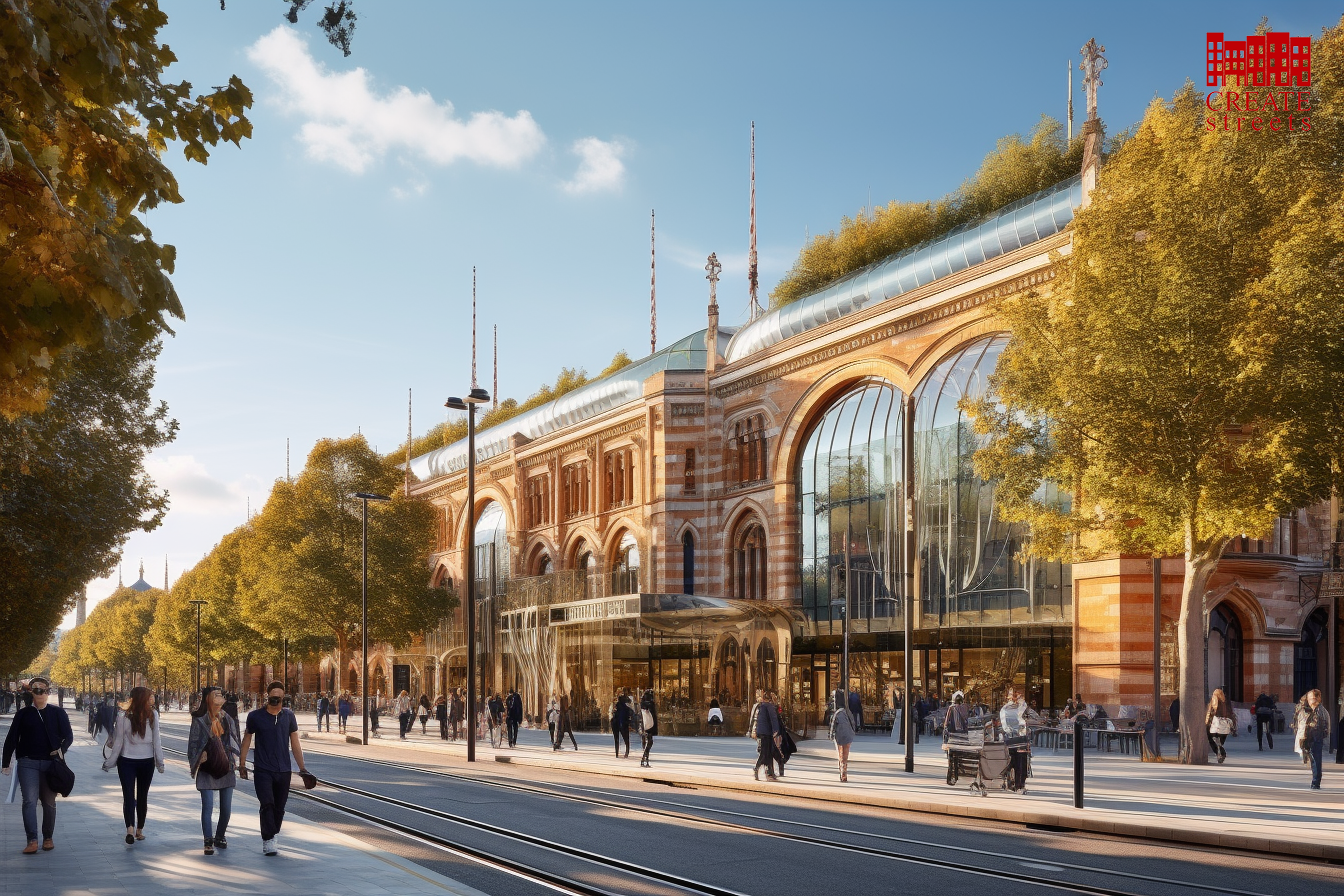
Trams and trees and rooftop gardens again. However, this time there is a playful infusion of South Kensington Venetian: those stripes of brick and stone are reminiscent of Norman Shaw or Westminster Cathedral.
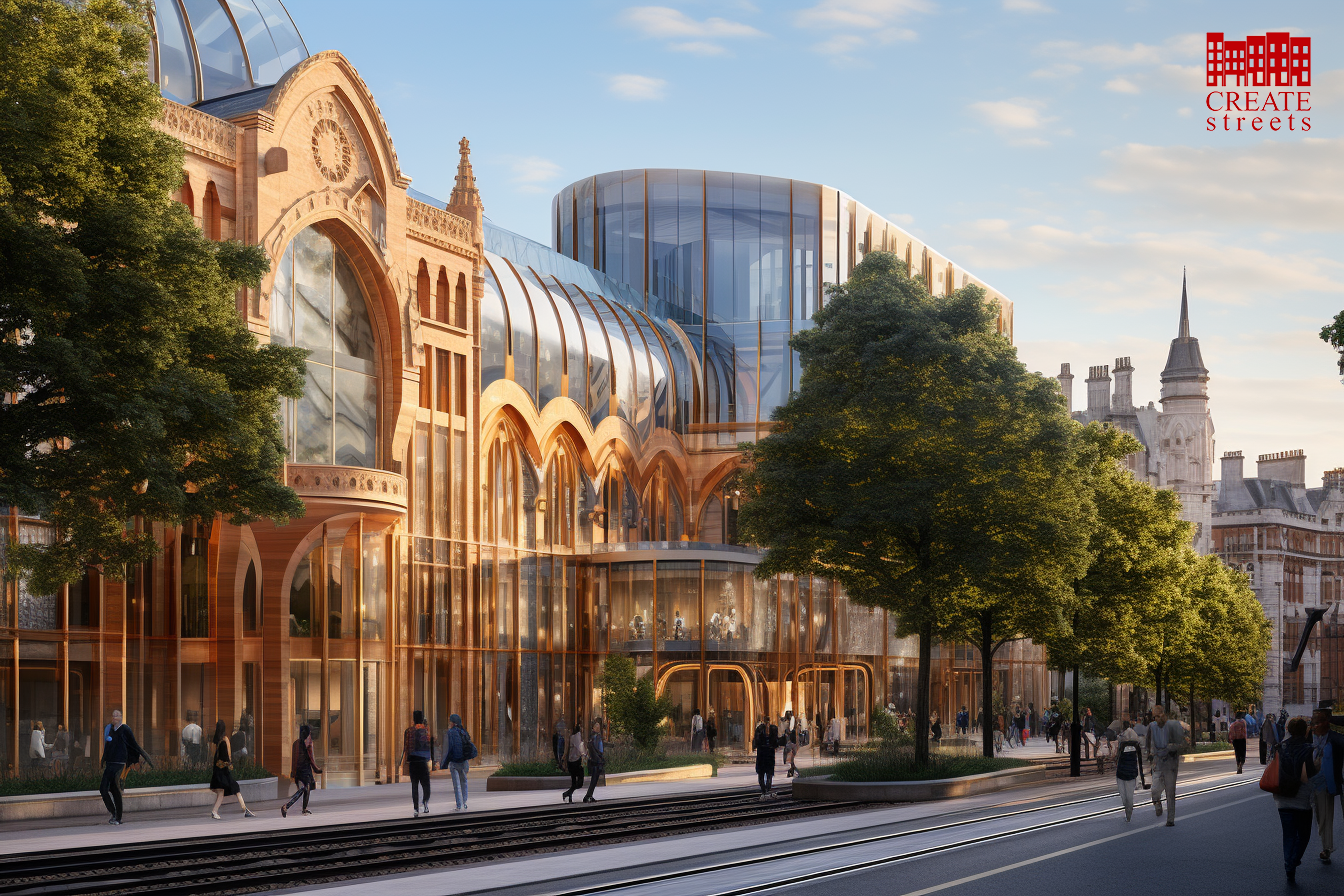
This is more fantastical though surrounded by new London vernacular. It combines a heady mix of Moorish forms and ornament with multi-height mullions and a soaring glass roof reminiscent of a nineteenth century shopping arcade.
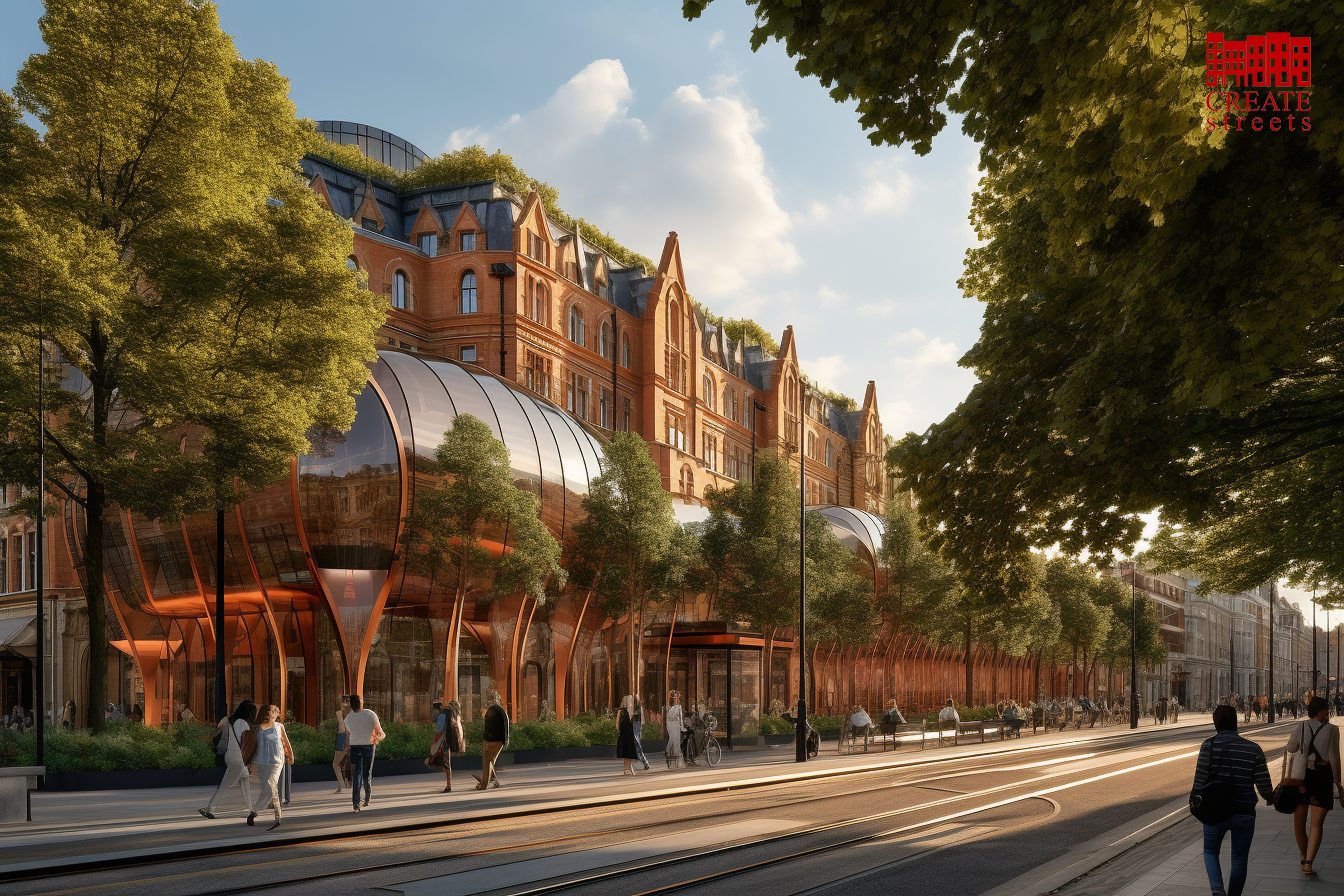
Euston still as part of the city beneath storeys of homes. Trees literally grow through and out of extravagantly sinuous double height shops and restaurants. Would you like to sit there and watch the trams go past before you catch your train?
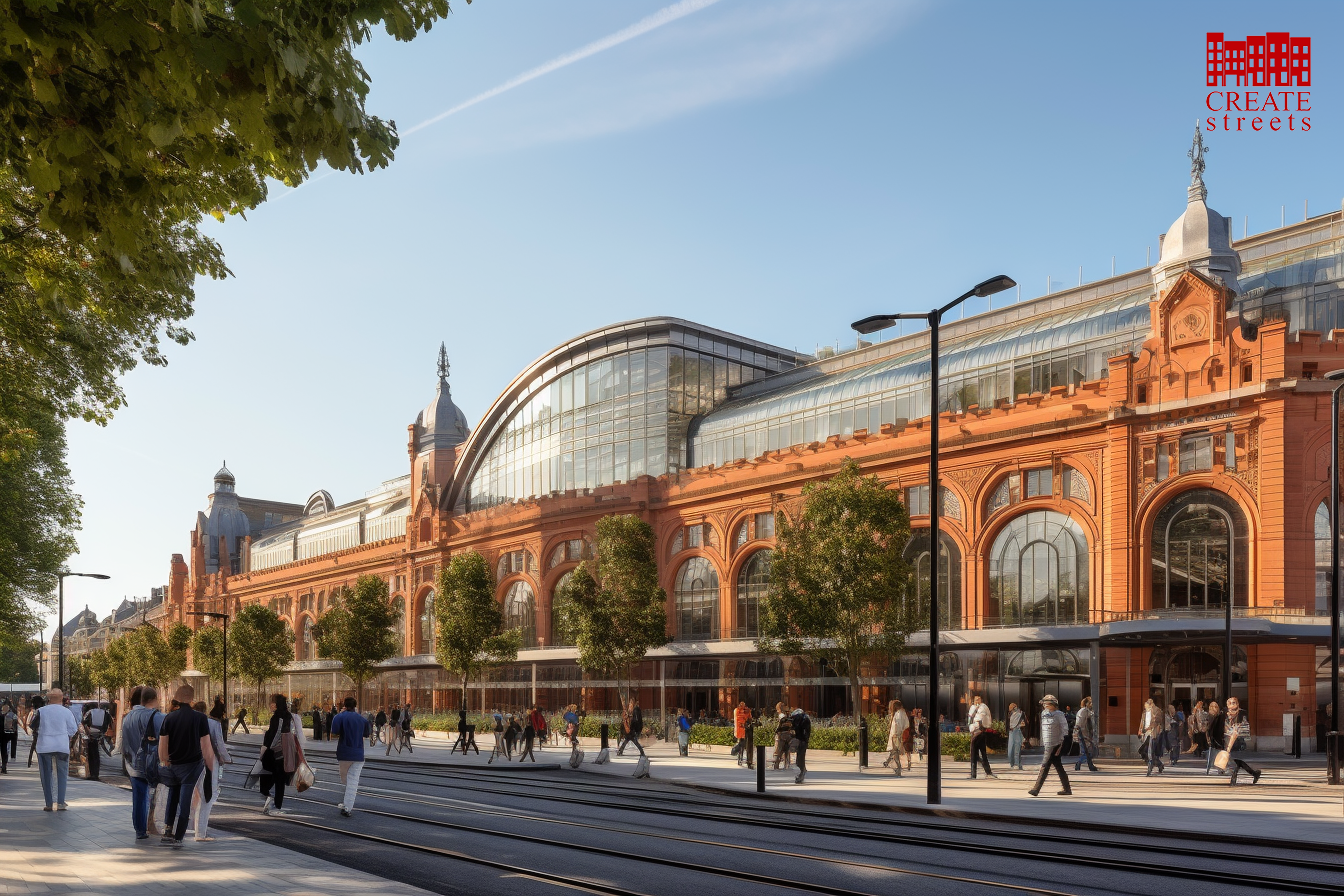
Euston Station in glass behind a richly red curtain wall. The stone might be more at home in Dundee than in London but you can still imagine this fitting neatly onto Euston Road.
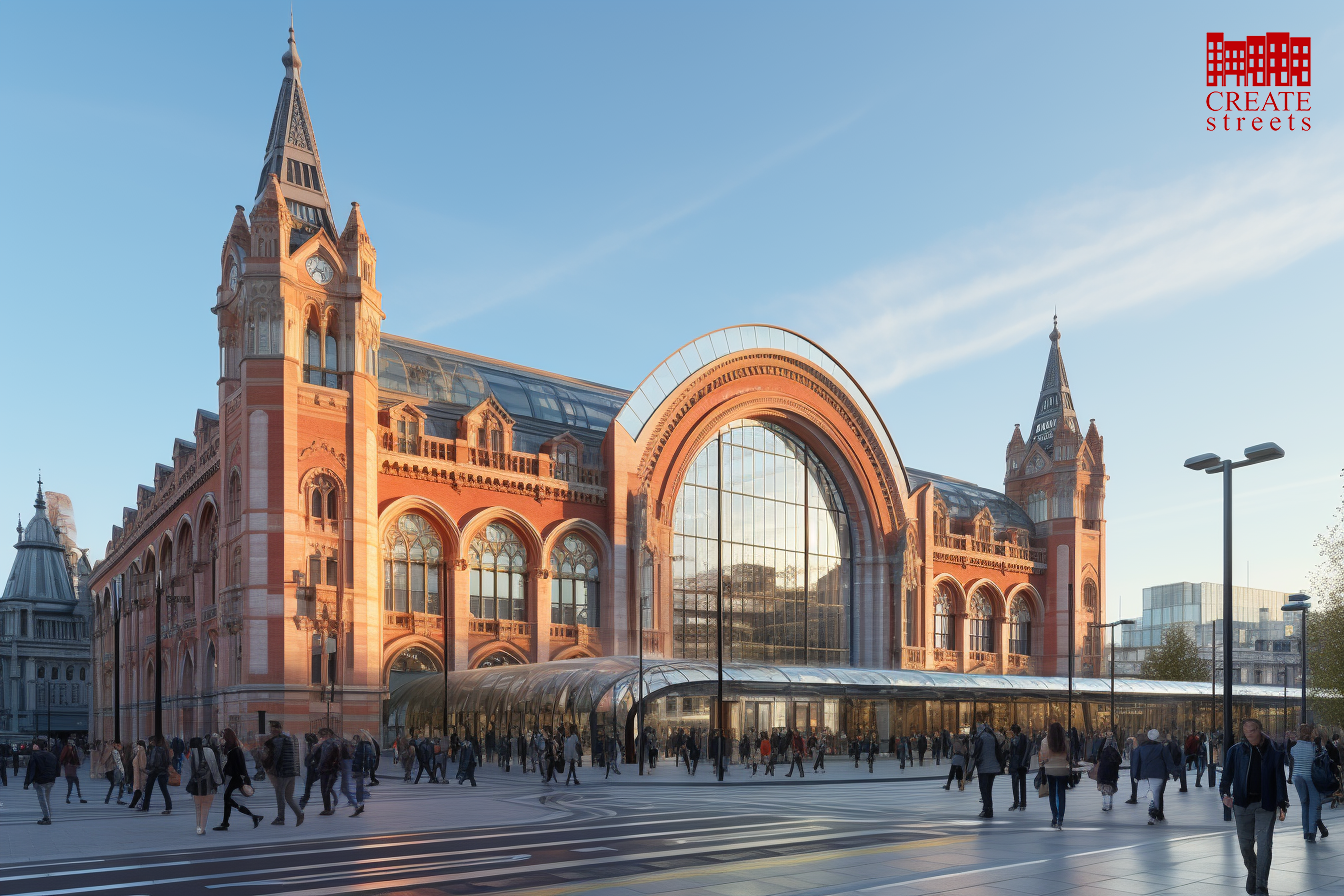
Now the station is less in the street and standing proud of its surroundings. Neo-Gothic on steroids. A highly flavoured combination of King’s Cross and St Pancras. You would certainly know when you had arrived. Imagine the view as you alight from your train. Treating travellers with dignity.
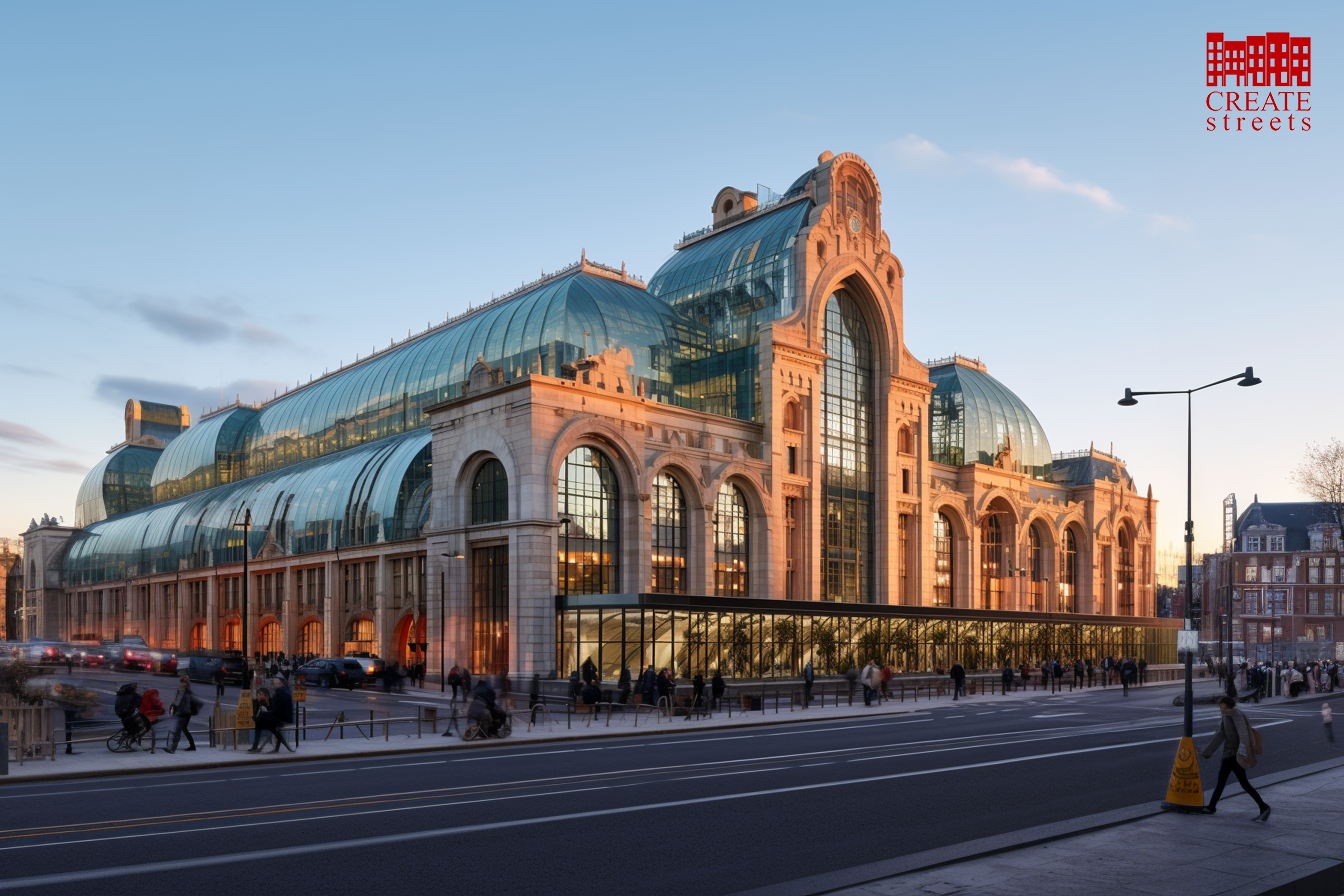
This is similar though feels more Parisian or even Viennese. The implication is that the trains are below with gloriously lit shopping and perhaps offices above. An imagined inside makes me think of the Galleria Vittorio Emanuele II in Milan.
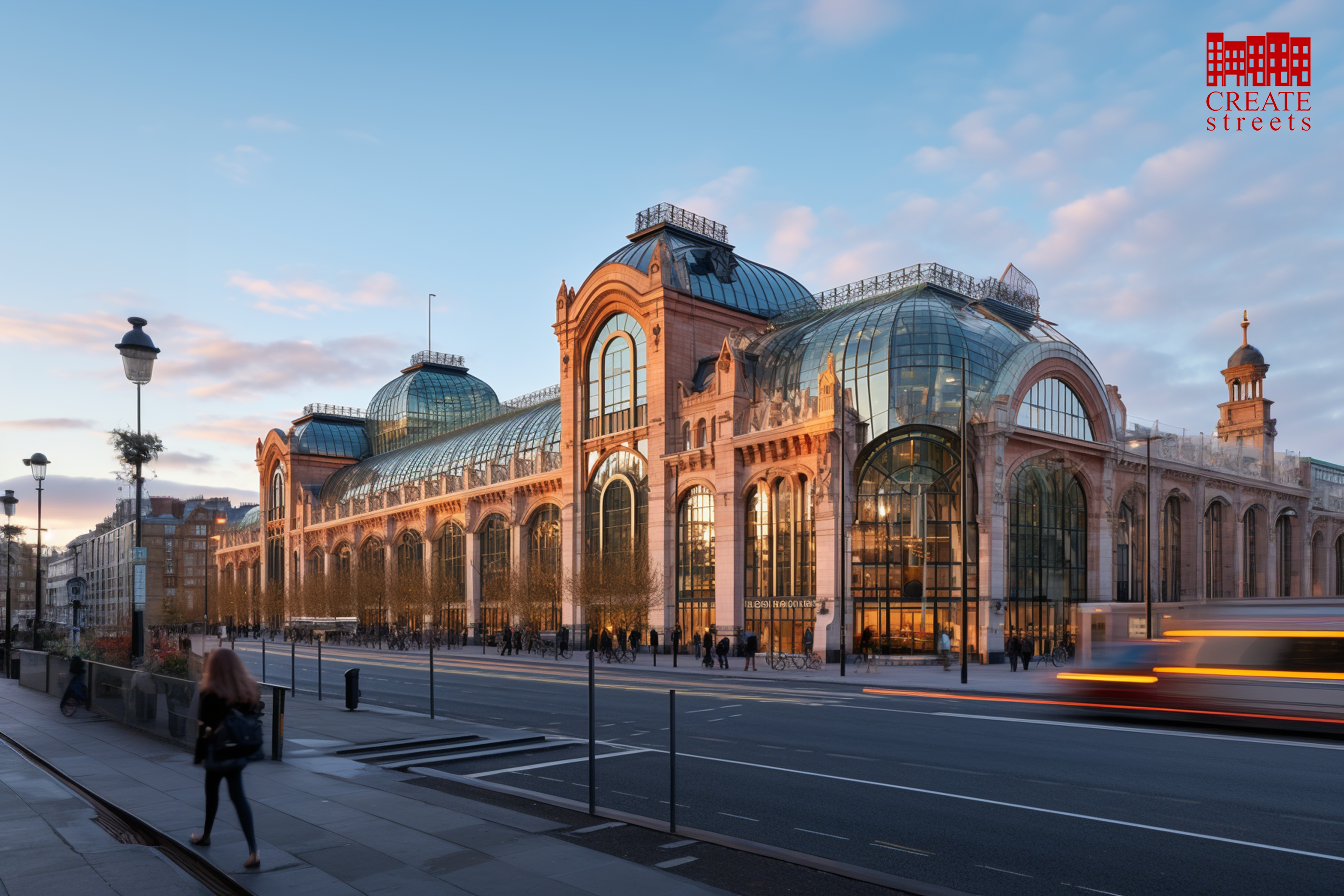
Would you want to visit this building? It is more Parisian and reminds me of the Musée d’Orsay. Perhaps not quite right for London though the city does have some quite French buildings, just as Paris has at least one street of English style houses – the rue de l’Elysée.

This is simpler and more of London. Italianate with stripes of probable Portland stone and red brick. I wonder if anyone would object to the new campanile? Rounded arches mix (historically inaccurately but joyfully) with floral patterns, stamped spandrels and quietly elaborate cornices.
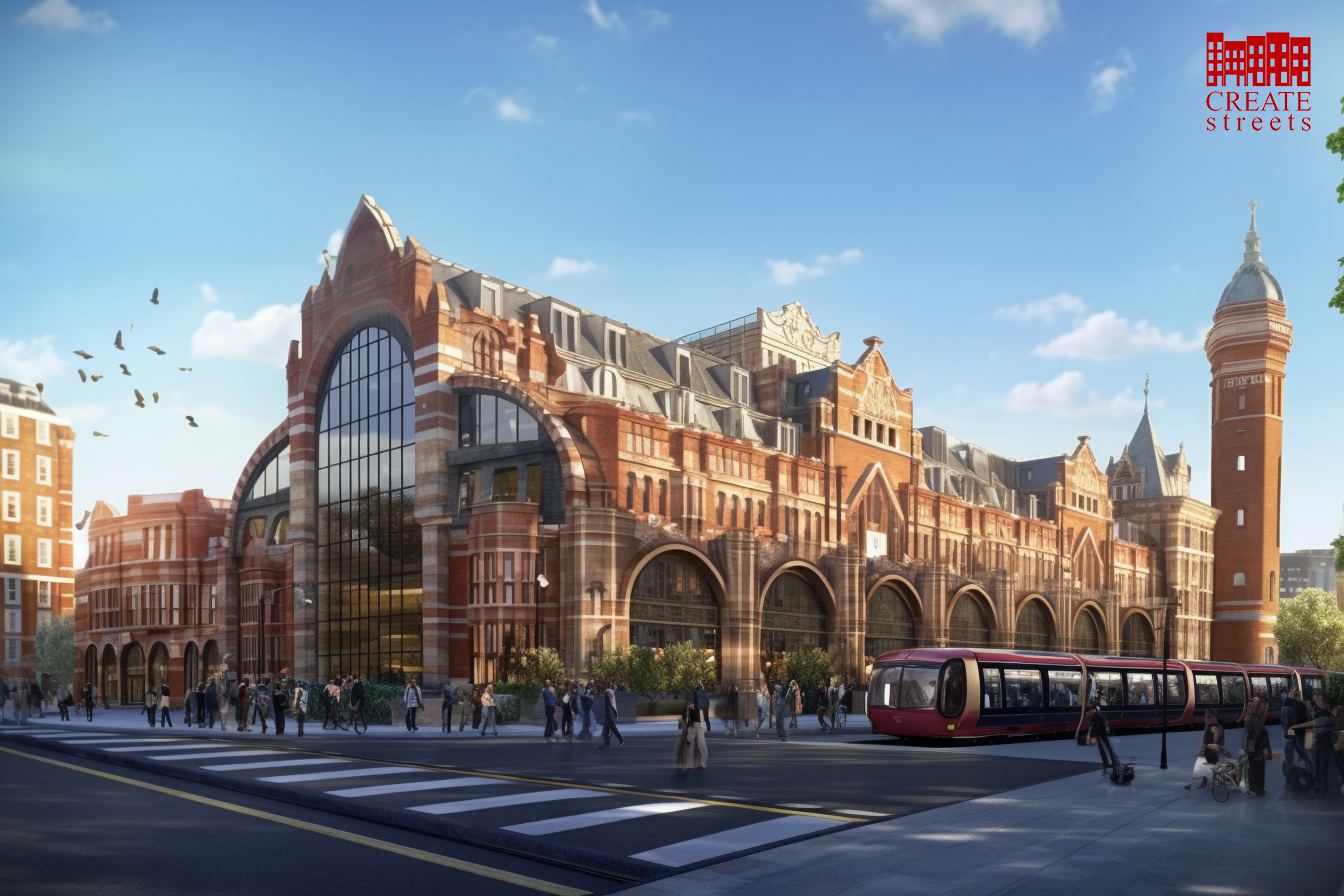
This is similar but far more elaborate with layers of offices above. The new London tram would appear to be startling the old London pigeons.
A dream? A fantasy? Impossible actually to achieve in a debt-burdened country which has fallen out of love with truly civic architecture? Possibly. These are only suggestions. And all may need more storeys of homes. But there is reason to hope. The English planning system now emphasises that new development should be beautiful and popular. Across the world, neighbourhood and community groups have been arguing, with increasing success, for more popular, engaging and loveable buildings and places. Nor is there any reason in economics or physics which prevents us creating a beautiful new station with thousands of homes and a roof soaring to the heavens. If the Government or the GLA wished to mandate an approach which really responds to public preferences, they could.
To achieve something like this instead of the normal bland stacked boxes of tedious and dreary ugliness we need to embed public preferences unshakeably in the selection and design process and ensure that the designers, engineers, developers and architects work primarily to the people’s preferences not to that of their fellow professionals.
Will we dare? Can we afford not to?
Nicholas Boys Smith is founding director of Create Streets
1 For a summary see Iovene, Boys Smith, Seresinhe (2019), Of Streets and Squares. For a shorter summary see Boys Smith, ‘Turning everywhere into somewhere’, Journal of Planning Law 13 (2021), pp.4-30.
2 This particularly matters because of the ‘design disconnect’ divergence of taste between the wider public and professional designers. See Chavez, Milner, ‘Architecture for Architects’, Urban Design Ideas (2019), pp.32-43.


